This report covers:
- The test
- RWS Hobby
- RWS Superpoint
- JSB Exact RS
- Sig Match Ballistic Alloy pellets
- The trigger
- Discussion
- Summary
Today we look at the accuracy of the Barra Schofield BB revolver with pellets. Remember — this revolver has a smoothbore barrel, and is also sold as a pellet/BB combination gun — the Barra Schofield No. 3 Aged Dual Ammo Kit.
The test
I shot 6-shot groups from 25 feet, as I mentioned previously that I would. I rested butt of the the gun’s grip frame on top of the sandbag and used a two-hand hold. I even wore my reading glasses with a 1.25 diopter correction that allows me to see the front sight clearly. I shot at 10-meter pistol targets and used a 6 o’clock hold.
RWS Hobby
The first pellet to be tested was the RWS Hobby wadcutter. The pellets went to the aim point, but Hobbys were not that accurate. Six made a 2.337-inch group at 25 feet.
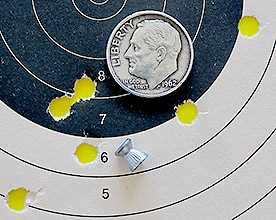
The Schofield put 6 RWS Hobby pellets into a 2.337-inch group at 25 feet.
RWS Superpoint
The next pellet I tried was the RWS Superpoint. I chose this pellet on a whim, but I’m glad I did because it was the most accurate pellet of those tested. Six of them went into 1.316-inches at 25 feet. They are a little left of the centerline, but they all hit at exactly the height I was aiming.
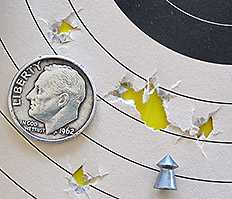
The Schofield put six RWS Superpoint pellets into a 1.316-inch group at 25 feet.
JSB Exact RS
Next up were JSB Exact RS pellets. Six went into 1.934-inches at 25 feet. I had hoped for better from this pellet, but that’s the way it goes sometimes.
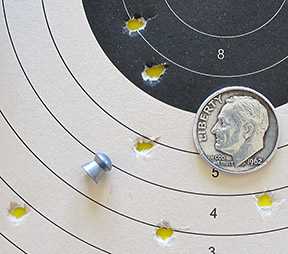
Six JSB Exact RS pellets went into 1.934-inches at 25 feet.
Sig Match Ballistic Alloy pellets
The last pellet I tried was the Sig Match Ballistic Alloy pellet. Six of them went into 2.84-inches at 25 feet, which is the largest group of the test by a large margin. But the odd thing is, four of those pellets are in 0.579-inches. That would be a real screamer if the other two pellets weren’t also there. As I was shooting I could see this little group growing and I thought I was going to have good news for you, but alas, those other two shots are there.
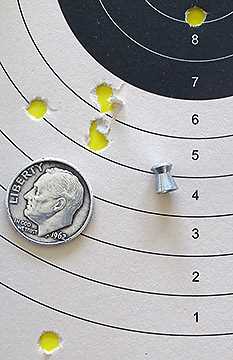
Six Sig Match Ballistic Alloy pellets made a 2.84-inch group at 25 feet, with four of them in 0.579-inches.
The trigger
Remember that I told you that the Schofield trigger is crisp? Well, it isn’t crisp so much as it slips through stage two smoothly. I couldn’t feel that in the previous tests, but as I shot today it became very clear. I really concentrated today and that was why I felt the trigger blade move. It’s still a great trigger, just not crisp.
Discussion
Several readers commented on ways to make the Schofield shoot pellets better and things got off track. But reader ProfSteelToe summed it up for us quite well in the comments to Part 4 when he said, “Now fellows — might we be be getting into the weeds here with our high expectations? How fast can a VW bug go with nitrous? A little faster than slow?”
Summary
This is the last report for the Barra Schofield BB revolver. I found it quite accurate with BBs at 5 meters and not that accurate with pellets at 25 feet.
The trigger is very smooth. So smooth, in fact that I thought it was crisp, as in breaking like a glass rod. What it is, though, is smooth. You don’t feel the travel unless you concentrate on it.
I like the break open design, which was S&W’s main contribution to revolvers at the time the Schofield firearm was made. However I find the grip a bit odd and it leaves the revolver feeling muzzle heavy.
All things said I find this to be a very realistic replica airgun. It’s worthy of owning for collectors who don’t want to spend hundreds for replica firearms or thousands for the real thing.
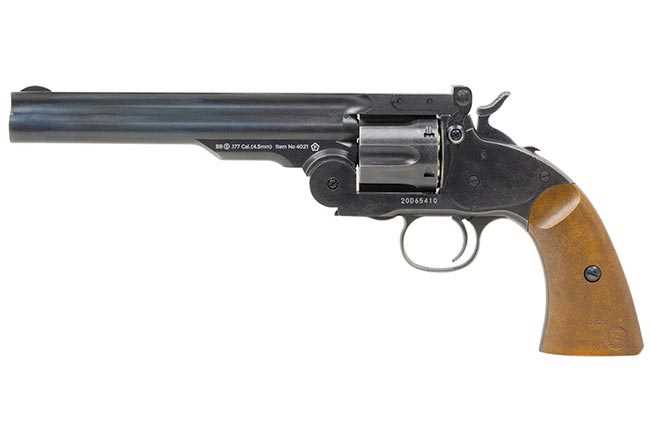

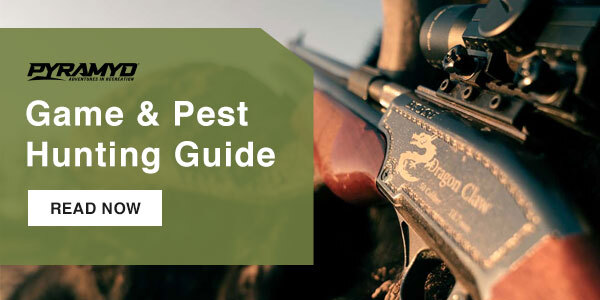
“How fast can a VW bug go with nitrous? A little faster than slow?”
Maybe, but it is more fun to drive a slow car fast than drive a fast car slowly.
Is this the gun that you used for your church event? If so, no wonder nobody could shoot well.
The real question is, did you have a big
smile on your face when you were done shooting?
-Y
Yogi,
I suppose there was a smile on my face when I finished. Was it big? I don’t know. I don’t look in the mirror that much. 😉
BB
BB
After a certain age ( that varies with the person) it may be best to avoid mirrors entirely as they tend to remind us of things we would rather forget.. Makes shaving more difficult, tho.
Ed
Wouldn’t think of driving the KübelThing any more than 60 mph even if it could go faster, Yogi – drum brakes and all that, except that did not seem to matter when FM first drove it at a tender (rotten?) 23.
Watch the Thomas Crown Affair, or the Love Bug. with the proper tuning Bugs get out of their own way…
What is a Porsche after all?
-Y
Yogi-
Back in the day I had a very petite girlfriend (5’1″) with a very petite 1969 VW Karman Ghia that was my favorite car to drive ever. Getting into that cat was like climbing into a sleeping bag and 6 inches off the ground. 30 MPH felt like 100.
B.B.,
Huh!
How did the two paragraphs about all rifles having down angle get into the middle of The Trigger section? I almost thought the ship had run aground on further information on why the revolver,’s trigger was no longer crisp.
Smooth bores make me ask WHY?
shootski
shootski,
Wow! That was on me. I know where it came from, but don’t ask why because I haven’t a clue.
BB
Why? Bean counters. “If you make them cheaper, they will buy.” Sadly, this is generally true.
I have a general question, ie not specific to today’s article but something I’ve wondered about in several other blogs as well: what is the significance of the different units of measurement, eg shooting over a distance in feet, yards, metres, etc?
Are there competitions that officially take place over a measured distance in yards, feet, etc, while others use metres? Or has it to do with shooting disciplines that originate from geographical areas where one or the other unit predominates? Or something else altogether, like Tom Gaylord (BB. Pelletier)’s mood at the time of writing? 🙂
hi3,
Yes there are competitions that are measured in specific units. In the Olympics, airgun matches are measured in meters. In certain US competitions like black powder, yards are the standard and for self defense courses 7 yards is a measurement. It’s a US versus the world thing.
BB is old and grew up in a feet and yards world, so that is how he thinks. His outdoor firearm rifle range is set up in yards. But when he tells you 5 or 10 meters, that’s measured with his rangefinder that has both units of measurement.
BB
Thanks Tom Gaylord (B.B. Pelletier) for responding. So, my take is, unless specifically mentioned, I needn’t worry about the choice of unit. 🙂
Yeah, what he said. I am an old geezer also and being over here, I use inches, feet, yards, not that meter stuff. I do not think in metric. I must use conversion formulas all the time.
There are shooting disciplines that use yards instead of meters. You do not hear of it much, but there is an open sight competition that uses 10 yards, while the peep sight competition uses 10 meters.
Fair enough RidgeRunner. I’m sure I was born later (1963) and also grew up on a different continent.
Here’s the odd thing, although we learned the metric system with which I am comfortable now and to use fingers to count to ten (apparently nowadays they count to 1024, using the binary system), I actually measure distances to my targets in longish paces and multiples of my footwear’s soles. 🙂
Cubits are also an option, H3. 🙂
FawltyManuel, I wonder how you pronounce “cubits”? Also, do you use it exclusively in your airgun activities?
hihihi,
I only use paces for Dueling.
Cubits are used for Arc construction.
Digits are used for measuring my groups…also as an ice breaker line with women as in: Do you believe in interdigital relationships? Once they get over the shock and blush I reach out and hold their hand(s) and say, I guess you do!
shootski
PS: cubits pronounced as Q-bits.
Shootski and others::
“I only use paces for Dueling..”
We read about 18th and 19th Century pistol duels happening at 10 or 20 “paces”. Does anyone know whether “pace” meant a single step or a double step when you were measuring for a duel? It would make quite a difference to how dangerous the encounter was.
From orienteering, I’m used to “pace” meaning only a double step; our 5280-foot “mile” comes from the Roman “milia passum”, a thousand 5-foot double steps. But the accounts of duels I have seen sometimes suggest a double step and sometimes a single step and most often don’t specify..
Does anyone have good info on this?
Cheers,
Guy
BB,
I saw one of these at the NC show. The pictures do not do it justice. This thing looks awesome!
I finally took my .457 Texan LSS out to my range some this afternoon. Wow! I would not hesitate to take a shot at a deer’s head at 50 yards or so. It did not do too bad at 100 yards. I cannot wait to try some of the recommended bullets for this air rifle. These things are awesome!
RidgeRunner,
What bullet are shooting currently?
Let the fun begin…KICK some or are you shooting lightweight bullets?
400+ gr or go home! lol!
Okay, maybe 350 gr.
shootski
shootski,
I am shooting what came with it right now, Seneca 350 grain. From what I have found out so far, the NSA 350 grain is the most accurate bullet for it. I intend on trying some of them soon.
I had it tethered to my 100 CuFt CF tank while I was shooting. It had about 3000 PSI in it when I started. I let fly eight shots to zero it at fifty yards. I then shot a three-shot group at fifty yards that measured approximately 1-3/4 inches CTC.
My air pressure was starting to drop off, but for giggles I took three shots at 100 yards. The first two shots were about eight inches low but were only about 1-7/8 inches apart. The third shot was about fourteen inches low. I was running out of air.
After I charge my tank up again and get some of those NSA bullets, we will take it out again. It uses a lot of air, but I sure do like big bore. 😉
50 yards
Too bad we don’t know if seating the pellets would have improved the group size for pellets.
Don
Guy Carden,
https://en.m.wikipedia.org/wiki/Code_duello
South Carolina Dueling Society:
“The rules governing dueling had developed over several centuries but were codified in Ireland in the 1770s in the code duello. An American version of the rules was published in Charleston in 1838 by John Lyde Wilson, who had served as governor of South Carolina from 1822 to 1824. The code duello provided that whoever gave the first offense must make the first apology, and that if no apology was forthcoming, a duel could ensue. The code duello also provided details about the proper positioning of the body and other particulars. Wilson’s American Code of Honor, unlike its Irish cousin, allowed blows to be returned but insisted that a formal duel follow. Once attempts at reconciliation were exhausted, the duelists and their assistants (principals and seconds) agreed to settle their differences on the field of honor, often in the presence of a surgeon, his assistant, and crowds that sometimes reached into the hundreds.
The dueling weapon of choice for a South Carolina gentleman was the pistol. During the colonial period cumbersome and inaccurate matchlocks and flintlocks were used, but the advent of the percussion pistol in the 1820s allowed for greater accuracy, and dueling pistols became elaborately decorated objects of art. Sometimes duelists and their seconds drew up excruciatingly detailed contracts. On the dueling grounds seconds flipped coins to determine which would give the “ready” and which would choose positions. Once all of the details had been worked out, the principals would take their places, and on hearing the signal, each would attempt to shoot the other. Even when large crowds of onlookers gathered, they usually remained silent during the proceedings, accentuating the solemn, genteel tone of the event. Duels did not always end in death; Wilson’s rules stipulated that any wound could end a duel unless the wounded party wanted another round. If any serious breach of dueling etiquette occurred, the seconds could shoot the offending principal–or each other in extreme cases.”
The Ten paces business is mostly Hollywood.
shootski